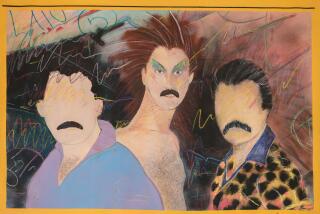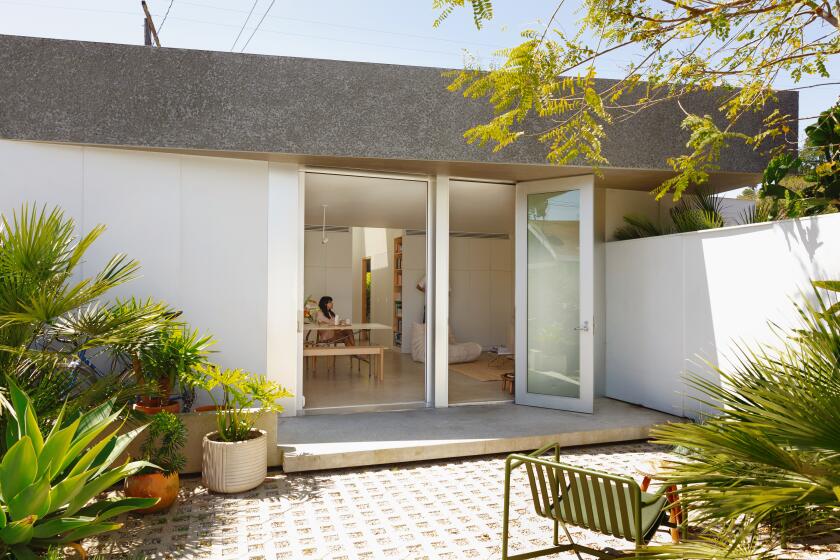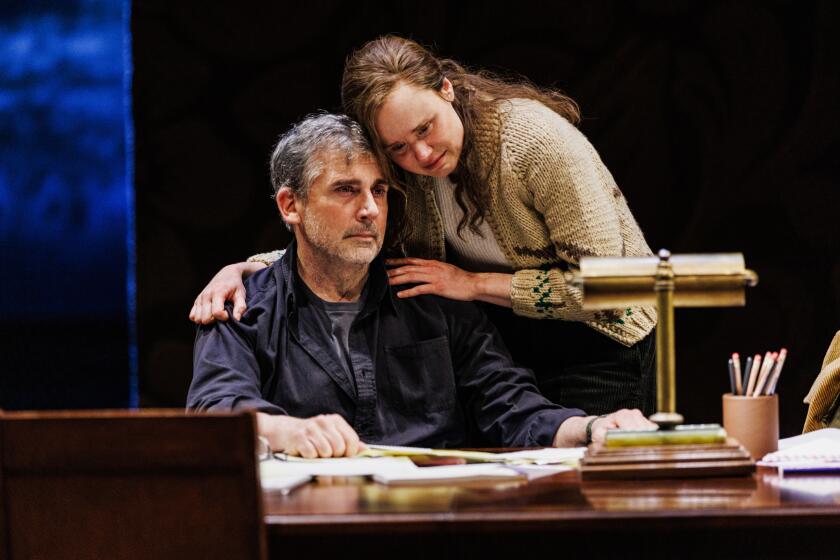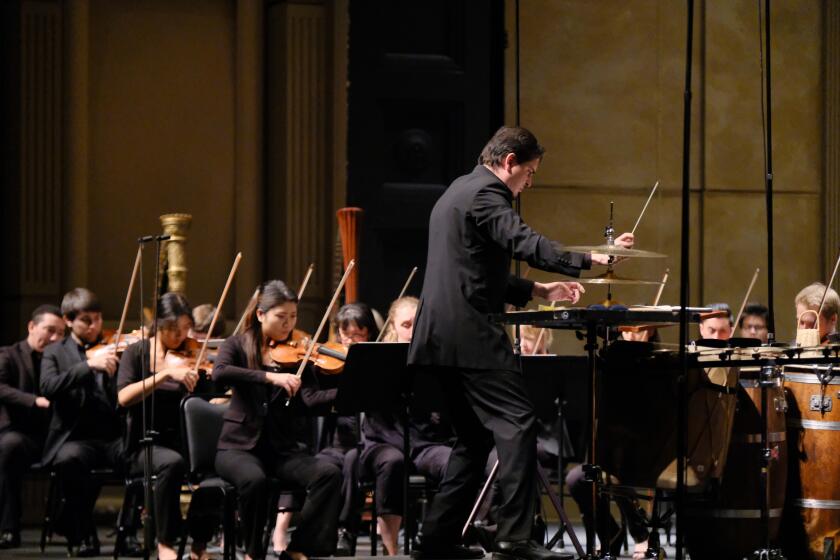Review: Getting physical with clay and fiber at Marc Selwyn
The pairing of Brie Ruais and Anna Betbeze makes sense, even if their two-person show at Marc Selwyn is lopsided in terms of affecting depth.
Both artists, based in New York, charge familiar materials with intense physicality. Ruais’ substance of choice is clay, and Betbeze’s the domestic shag rug. Work emerges for both at the intersection of matter, the body and the pictorial plane.
Ruais measures out her body weight in clay and then acts upon it, transforming it: pushing and spreading the mass outward to form a rough slab circle, or flattening it, then cinching it around the middle like a dress or drapery.
She cuts the resulting shapes into grids of tiles, glazes them in earthy umber and eggshell or glossy pewter metallic, fires them and reassembles them into a whole, mounted on the wall or floor.
The sculptures are as dense with metaphorical implication as they are powerfully immediate. Ruais performs these pieces into being, imposing her own weight and force and will upon the malleable matter, the process a striking analog to shaping the raw clay of the self.
She wrestles and smears, presses, kneads and folds. Furrows from the trails of her fingers give the surfaces dynamism and direction. Toe prints, and indentations from knees and elbows create ridges and clefts, mounds and fissures. These are earthworks on the scale of the individual body, landscapes of singular energy.
Betbeze draws in ink on flokati rugs and stains the long, hairy fibers with vivid dyes in magenta, cyan, yellow, brown. She then selectively shears the shaggy panels, leaving some tufts long and trimming others down to nubs. Bald patches peek out under the fringe, and irregular holes appear here and there. The rugs hang on the wall like abject trophy pelts, skins that have been subjected to erratic, vandalistic violation. Color Field paintings crossed with the spirit of Mike Kelley, domestic luxury items given bad punkish haircuts, they exude defiance.
After delivering a jolt of surprise and perhaps anger, however, the pieces don’t offer much more to look at or think about. Their surfaces are varied, but surfaces are all they stay.
Ruais’ work, by contrast, is compelling to turn back to again and again. The textures are rich and agitated, alive. Some of the forms nod to Lynda Benglis’ pleated metal sculptures, and the performative aspect is subtly connected to the landmark 1972 “Carving: A Traditional Sculpture,” by another feminist pioneer, Eleanor Antin, who, in documenting a period of weight loss, used her body as both material and agent.
Ruais puts gender issues into fluid play by merging the vocabulary of traditionally feminine, fabric-based pursuits (folding, cinching, pleating) with the scale and machismo that the generation of Peter Voulkos and John Mason introduced to ceramics. Links could also be drawn to the wry, body-based work of Bruce Nauman and the gestural athleticism of action painting.
Ruais’ sculptures are fired and fixed in place, but visually and intellectually they remain, thrillingly, ever in motion.
Marc Selwyn Fine Art, 9953 S. Santa Monica Blvd., Beverly Hills, (310) 277-9953, through Aug. 16. Closed Sunday and Monday. www.marcselwynfineart.com
More to Read
The biggest entertainment stories
Get our big stories about Hollywood, film, television, music, arts, culture and more right in your inbox as soon as they publish.
You may occasionally receive promotional content from the Los Angeles Times.






